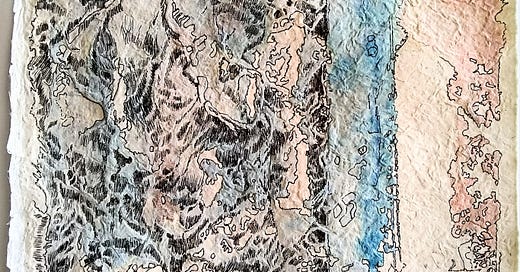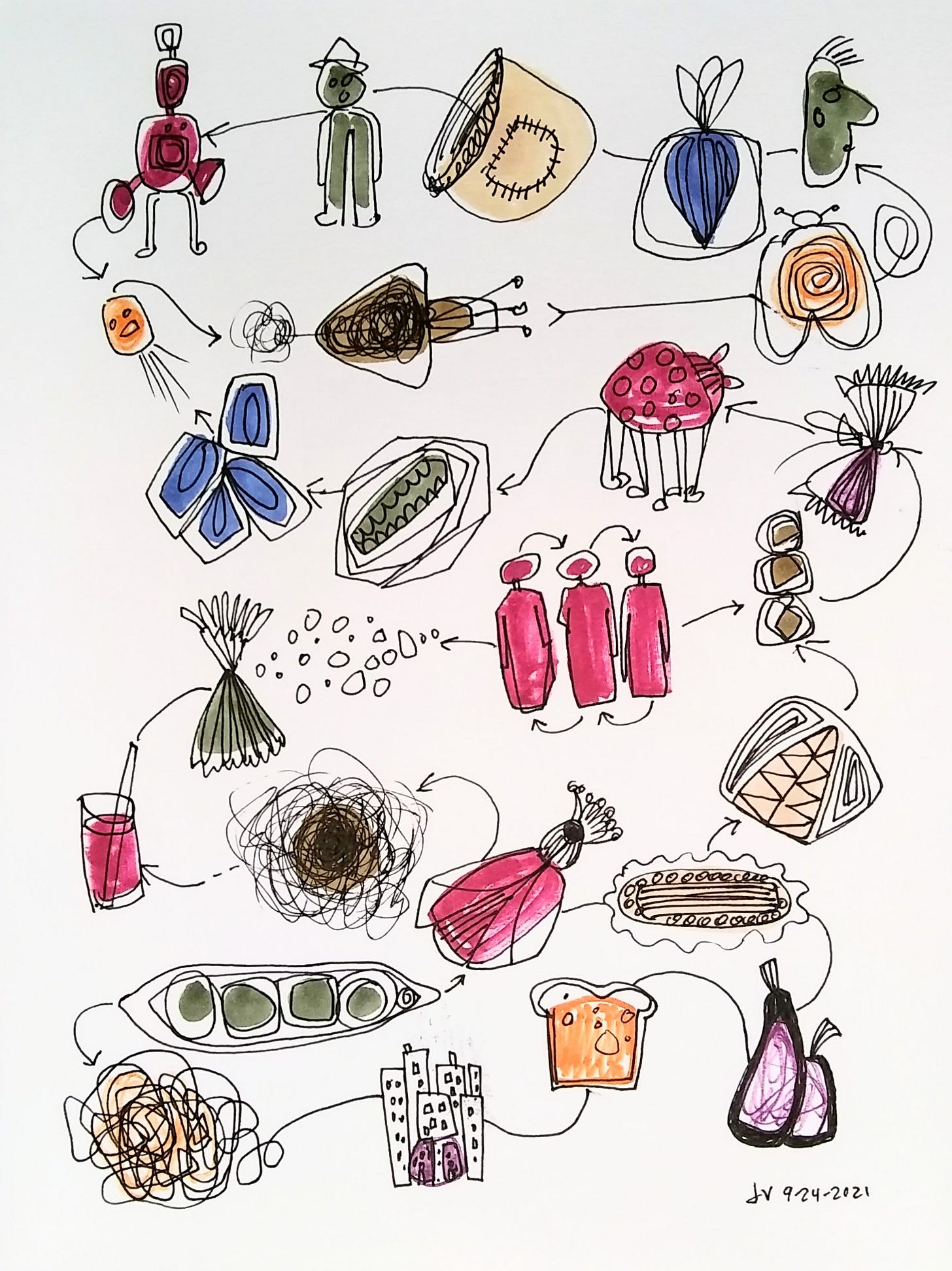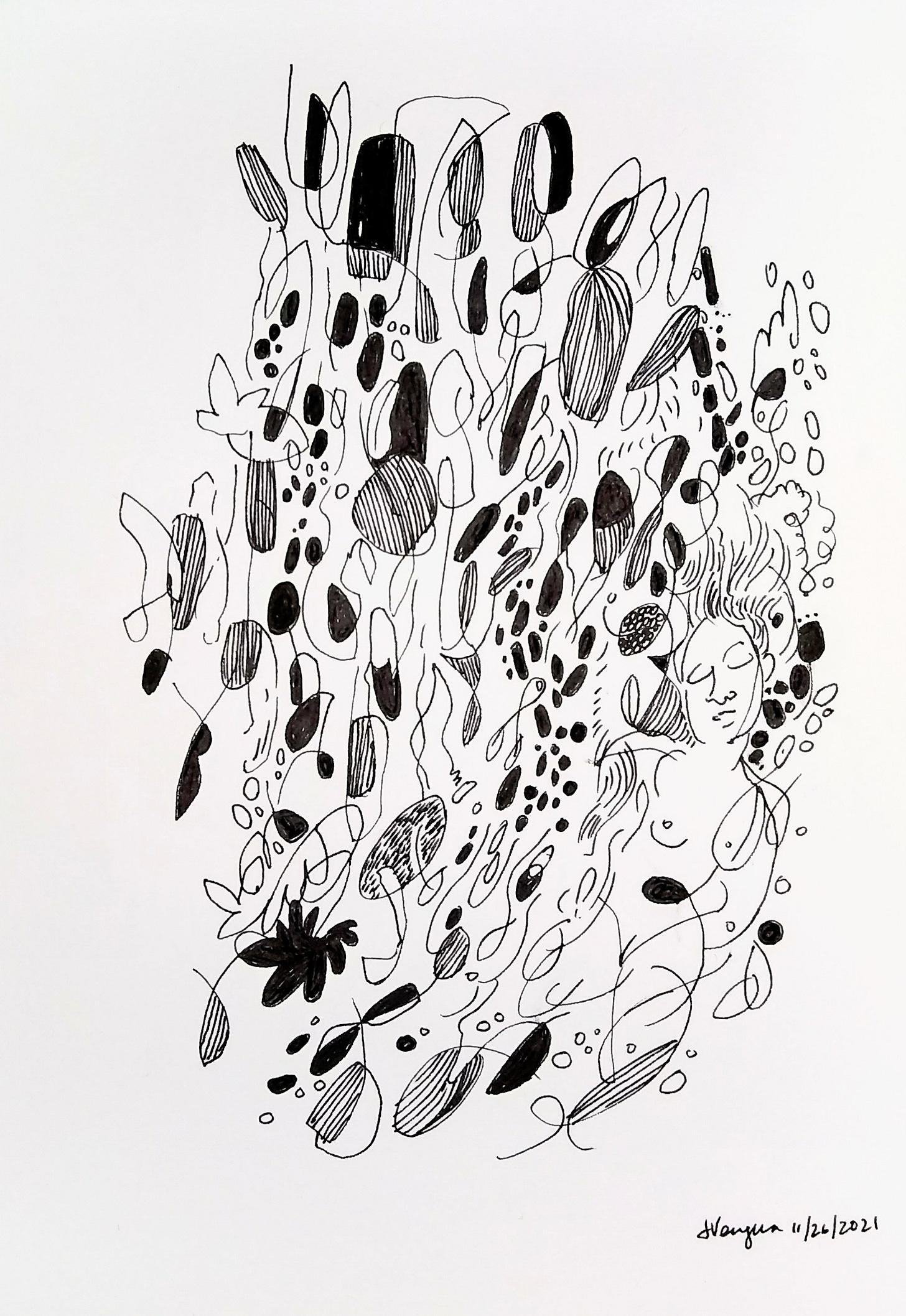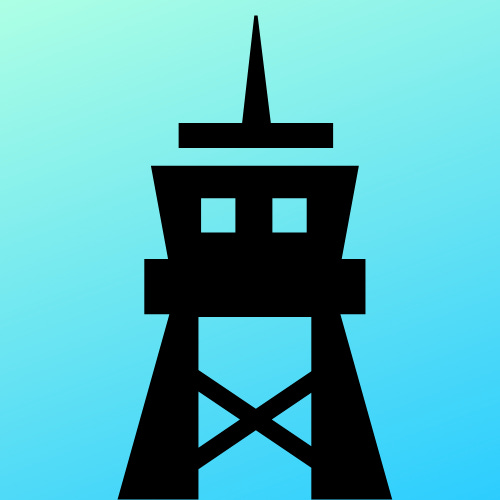State of Flow
No. 197: The Rail Trail; Life is Beautiful; Art & the Flow State (Jenaro Pagan, Carl Lorenz Cervantes); Artist Resources, Artists: Ryan Villamael, Drewscape, Bob Shea & Andy J. Pizza; Hania Rani.
THEN & NOW
This is a postscript to my “Surf City Tomboy” issue, where I wrote about the changes I experienced in moving from foggy San Francisco to sunny Santa Cruz as a kid.
Recently I saw that a lengthy “rail trail” for walkers and cyclists had been built parallel to the railroad tracks that passed right by our old house and the nearby industrial buildings and fields. I posted a video of the route, below. Look for the “Fair Ave.” sign near the halfway point (about 6:50); the camera very briefly catches a glimpse of our house. You can see the fields that I played in, the factories, warehouses, and vacant lots. What irony to see the stinky cannery buildings now gentrified by wine tasting shops, restaurants, and a natural foods market!1 Trains no longer rumble down the railroad tracks, along which I walked to school. Back then, there was no paved two-lane trail—just gravel and brown weeds:
I’m really glad to see that rail trail, because the path along the railroad was not great for walking. Kids who were not careful might get run over by the train, or could turn an ankle while running on the tracks. I developed a habit of vigilance on my walks, and would take quick detours if I saw anyone looking remotely questionable walking my way on the tracks; fortunately I could see them from a distance.
People have been feeling some anxiety this year—myself included. On the other hand, I do not want to lose my sense of humor, or lose my will to create and to appreciate what is beautiful in life. I want to be capable of understanding the gravity of the situation, but at the same time, to retain my ability to enjoy the good things while I can.
When I read or watch a video critical about the current situation, occasionally I just have to laugh—sometimes bitterly—because there is also an element of ridiculousness to it all. These days, it seems like the most common type of humor is sarcasm or schadenfreude at another person’s mistakes, stupidity, or mental decline.
But surely, the enemy has won if compassion and your ability to perceive beauty and love are destroyed, as filmmaker Marcus Tran explains in his discussion of Roberto Benigni’s role in the film Life is Beautiful (warning: spoilers):
ART & THE FLOW STATE:
I’ve been thinking about the “flow state” in art and its resemblance to meditation. I tend to bring a lot of “baggage” into my art-making process, but there are times when I am able to jettison that, and drawing or painting becomes “flow.” I let my hand and fingers take the lead and watch what happens, letting go of expectations and accepting whatever emerges on paper or canvas, including “mistakes.” When I get into this state, my sense of time changes. When I’m focused in this way, whatever aches, pains, or itches I have tend to recede into the distance.
This is my ideal state for making art; it’s not unlike meditation, where I simply watch what happens. Thinking happens; judgement happens, because I can’t stop my mind from twirling around. But if I just let it run its course, eventually it quiets down. What remains is the momentum of my hand, arm, and eyes, along with the basic thought processes that keep it moving.
For explicit instructions on the meditative aspect of “automatic drawing,”2 check out fantasy artist Jenaro Pagan’s “automatic drawing” video on his YouTube channel Realms of Nowhere. I agree with his idea that one of the best times to do this is at night, just before bedtime.
Two of my “bedtime” automatic sketches from 2021:
Carl Lorenz Cervantes’ book Sikodiwa will be available on Dec. 2, 2025. In the video below, Cervantes discusses the indigenous cultural and psychological contexts of creative experience as “flow.” Interesting to me is how “flow“ states are often contextualized as an individual experience in US/European culture. But in Filipino culture, it’s a more expansive idea—a spacious and “breathable” (ginhawa) sense of being that connects us to the world around us. I’m also interested in how he describes the concept of sining, where art is not just artistry and skill, but a process that is part of everyday life, rather than something to be commodified or displayed in a museum.
RABBIT HOLE
Resources:
Following the Etsy Strike in 2022, a group of artisans sought an alternative platform to sell their arts and crafts. In 2023 they were officially incorporated in Oregon as the Artisans Cooperative. Their growing membership guides the direction of the site, and all members own a piece of the pie.
Steinbeck Fellows Program for writers in Central California is open to emerging writers of any age and background and includes a $15,000 stipend. Applications open in September. Your writing does not have to refer to author John Steinbeck.
Artists:
Philippine artist Ryan Villamael’s paper art (in conversation with Katey Acquaro):
Singaporean artist Drewscape (Andrew Tan) combines urban sketching with comics, benefiting from the immersive experience while he does it. It’s amazing how rough and impressionistic his marks are, yet it all comes together, somehow:
Two artists with ADHD (both of whom are on Substack), Andy J. Pizza and Bob Shea, talk about having “a head full of bees,” creativity, and remembering to have fun. Although I doubt I have ADHD, this REALLY resonates with me. Also, I need to read Stinky Cheese Man!
SOUNDINGS
Hania Rani performs “On Giacometti” at Alberto Giacometti’s atelier in Stampa Switzerland, originally a wooden barn:
My gratitude goes to everyone who reads Eulipion Outpost regularly, and especially to those who have subscribed or donated on my Ko-fi page to support my efforts.
My ongoing appreciation goes to the Mysterious M. for his excellent editing skills.
Website and blog: Jeanvengua.com
A Crooked Mile (a blog)
CommonwealthCafe (Filipino American & AAPI history and print culture)
Eulipion Outpost is a reader-supported publication. To receive new posts and support my work, consider becoming a free or paid subscriber.
Notes:
You can only see the back of the buildings and parking lots in the video.
A process practiced in the early 20th century by surrealist artists, such as Salvador Dali and Joan Miró, who were fascinated by Freud’s theories of the subconscious.







